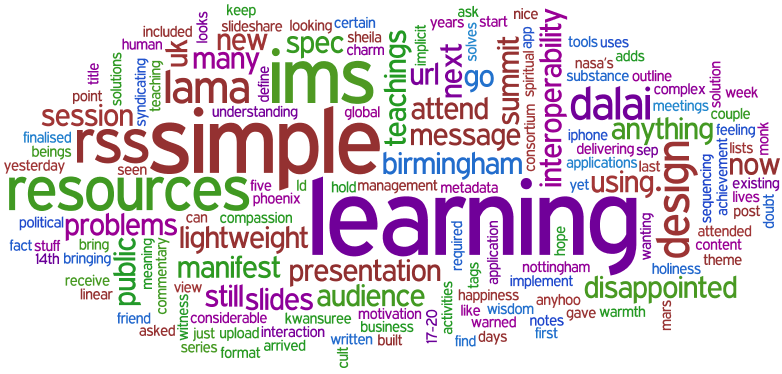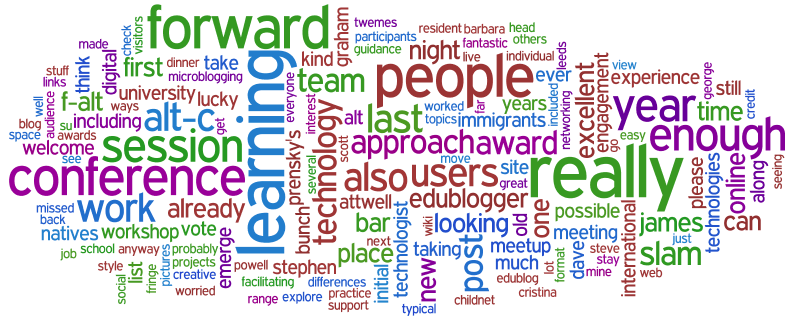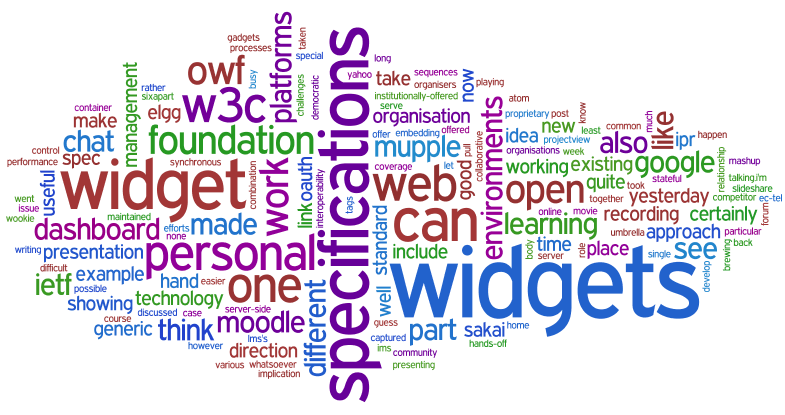I’ve just discovered Wordle, a web application that creates word clouds from any body of text. Word clouds, like tag clouds, are a collection of individual words whose text size reflects the frequency of occurrence in a given body of text. Wordle has some nice layout tools to help you create beautiful word clouds. It’s easy to make your own. Here’s a word map from my weblog’s RSS feed. It’s easy to see the emphasis of words in my recent blog posts (click on the picture to see the whole word cloud).
In the past I’ve used a more formal version of this kind of approach in the battle against plagiarism. For my module’s assessment I get students to write a dissertation and occasionally one student tries to pass someone else’s work off as their own. There are a number of applications that compare text from one source against another to look for blatant copying, but another approach is to use textural analysis that compares the linguistic style and word count of one section of a piece of work with that of another section. If you suspect a student of incorporating someone else’s work you can use this approach to spot a change a style from one chapter to another. This is a useful approach when the plagiarised source cannot be identified.
Anyway, for fun I thought I’d use Wordle to compare the word maps from the recent blog posts of three leading learning technologists. It’s interesting to see the different word emphasis. Can you guess which map belongs to Josie Fraser, Scott Wilson and Stephen Downes?



